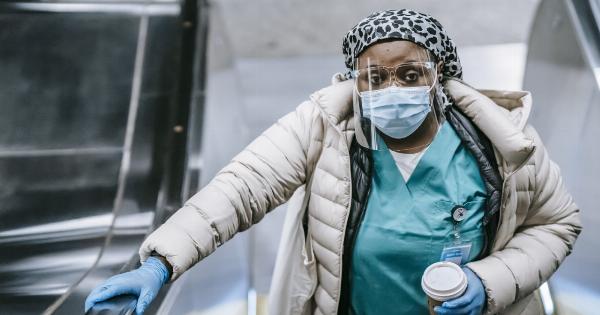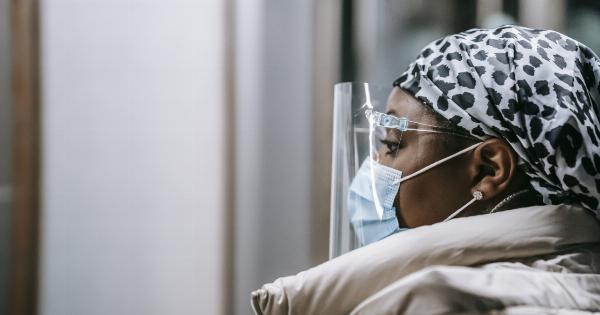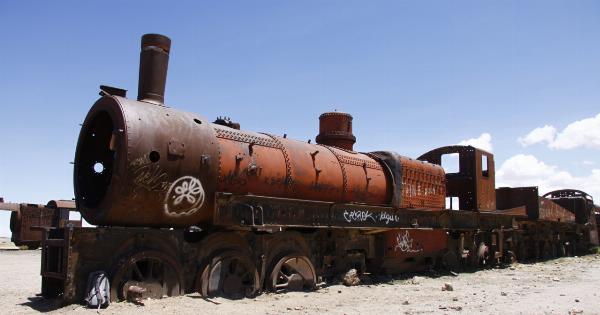Workplace hazards can pose a significant risk to our health and safety. While we often prioritize protecting our hands, eyes, and head, we must not forget about the importance of guarding our legs.
Legs are vulnerable to various workplace hazards, including slips, trips, falls, falling objects, and exposure to harmful substances. In this article, we will explore some common leg hazards at work and discuss effective measures to prevent them.
By understanding and implementing proper leg protection strategies, we can ensure a safer and healthier working environment for ourselves and our colleagues.
1. Slips, Trips, and Falls
Slips, trips, and falls are some of the most common workplace accidents that can result in leg injuries. Wet or slippery floors, uneven surfaces, cluttered walkways, or poorly maintained staircases can all contribute to these accidents.
To prevent such incidents:.
• Keep walkways and stairs clear of obstacles or clutter.
• Use caution signs to warn others of potentially hazardous areas.
• Clean up spills promptly and use warning signs until the area is dry.
• Install anti-slip mats or traction strips in areas prone to wetness.
• Ensure proper lighting in all working areas.
2. Falling Objects
Falling objects pose a significant risk to our legs, especially in industries like construction, manufacturing, or warehousing. Heavy objects, tools, or equipment falling from heights can cause severe injuries. Therefore, it is essential to:.
• Always wear appropriate personal protective equipment (PPE) like safety boots.
• Use hard hats if there is a risk of falling objects from above.
• Secure tools and equipment when working at heights.
• Establish barriers or exclusion zones to prevent unauthorized access to hazardous areas.
• Conduct regular inspections of overhead fixtures to ensure their stability.
3. Hazardous Substances
Many workplaces deal with hazardous substances that can cause severe leg injuries upon contact or exposure. Chemicals, acids, corrosive liquids, or even extreme temperatures can be harmful to the legs. To protect ourselves:.
• Always wear appropriate PPE, including protective clothing and boots.
• Follow safety protocols and guidelines when handling hazardous substances.
• Store chemicals properly in designated areas and ensure proper labeling.
• In case of spills, follow the necessary procedures for cleanup and decontamination.
• If exposed, seek immediate medical attention and report the incident to the authorities.
4. Machine Hazards
Machinery poses a significant risk to our legs if cautionary measures are not in place. Moving parts, sharp edges, or pinch points can cause severe injuries or amputations. To mitigate these risks:.
• Use machine guarding devices like shields, barriers, or interlocks.
• Conduct regular inspections and maintenance of machines to ensure their proper functioning.
• Provide proper training to employees on safe operating procedures and the use of machine guards.
• Follow lockout/tagout procedures when performing maintenance or repairs.
• Encourage reporting of any malfunctioning or unsafe equipment.
5. Working at Heights
Working at elevated levels presents a considerable risk to our legs if we fall or trip. Professionals in construction, maintenance, or window cleaning often encounter this hazard. To protect ourselves while working at heights:.
• Use appropriate fall protection equipment, such as safety harnesses and lanyards.
• Secure ladders and scaffolding properly before use.
• Follow proper procedures for ascending and descending elevated areas.
• Ensure that safety guardrails are in place when working on elevated platforms.
• Never overreach or stand on unstable objects while working at heights.
6. Repetitive Motion Injuries
Repetitive motion injuries can affect our legs if we perform tasks that involve continuous movement or awkward postures. Jobs that require repetitive bending, kneeling, or squatting can lead to strains, sprains, or musculoskeletal disorders.
To minimize these risks:.
• Use ergonomic tools and equipment that support proper posture and reduce strain.
• Take regular breaks and utilize stretching exercises to relieve pressure on leg muscles.
• Ensure that workstations are ergonomically designed to promote comfort and reduce the risk of injuries.
• Rotate tasks whenever possible to prevent constant strain on specific muscle groups.
• Report any signs of discomfort, pain, or early symptoms of repetitive motion injuries to supervisors or occupational health professionals.
7. Electrical Hazards
Working with electricity poses a significant risk to our legs due to the potential for electrical shocks or burns. Electricians, maintenance workers, or engineers dealing with electrical systems must prioritize safety measures:.
• Always de-energize equipment before working on or around it.
• Use appropriate insulating PPE like electrical hazard boots or gloves.
• Apply lockout/tagout procedures when working on electrical panels or machines.
• Regularly inspect and maintain electrical systems to prevent malfunctions.
• Follow electrical safety standards and guidelines provided by regulatory bodies.
8. Vehicle Hazards
Vehicle-related accidents can cause severe leg injuries, especially in industries like transportation, logistics, or construction. Collisions, being struck by moving vehicles, or losing control of heavy machinery can all be dangerous.
To stay safe in these situations:.
• Always wear high-visibility clothing to make yourself visible to vehicle operators.
• Adhere to traffic rules and specific safety guidelines for operating vehicles or heavy machinery.
• Establish and maintain designated walkways or pedestrian zones away from vehicular traffic.
• Use appropriate safety barriers to separate pedestrian areas from vehicle routes.
• Ensure proper maintenance and inspections of vehicles to avoid mechanical failure.
9. Working in Extreme Environments
Extreme environments, such as extreme temperatures, high humidity, or extreme cold, can pose risks to our legs. Working in outdoor settings or specific industries like foundries or freezer warehouses requires additional precautions:.
• Wear appropriate insulated and waterproof footwear in extreme cold or wet conditions.
• Use proper thermal insulation in extreme heat environments to avoid burns or heat-related injuries.
• Take regular breaks and stay hydrated in high-temperature or humid environments.
• Monitor and assess employees’ physical conditions regularly while working in extreme environments.
• Familiarize yourself with relevant safety guidelines and protocols specific to your work environment.
10. Emergency Preparedness
Emergency situations, such as fires or natural disasters, can dramatically increase leg injury risks. Proper emergency preparedness can ensure a timely response and minimize the resulting harm:.
• Familiarize yourself with emergency procedures, evacuation routes, and assembly points.
• Participate in regular emergency drills to practice proper responses.
• Keep emergency exits clear and accessible at all times.
• Learn basic first aid and CPR techniques to assist injured colleagues until professional help arrives.
• Report any potential fire hazards or unsafe conditions to supervisors or safety officers.































